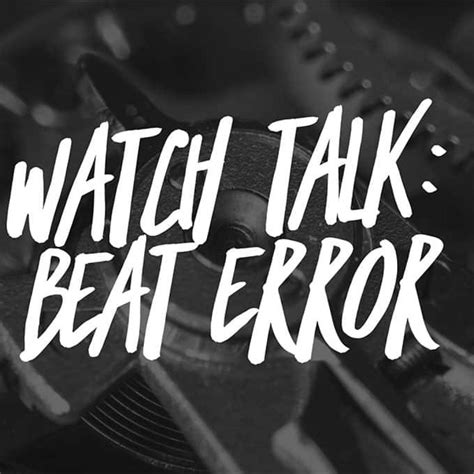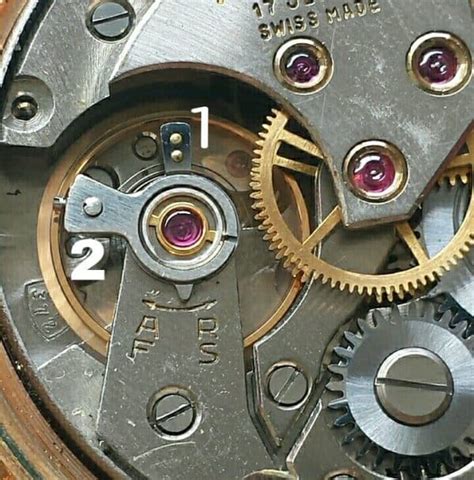beat error rolex | adjusting beat error beat error rolex Beat error-simplified is the difference in the tick-tock, that is adjusted by changing the position of the hairspring. 0-.3 ms is exceptable in a fine movement. Amplitude is how far the balance is swinging. SMART LV SWITCHGEAR. MONITORING AND MANAGEMENT YOUR POWER SYSTEM. 2019.09.11. CHINT GROUP ALL RIGHTS RESERVED. DThe development of LV switchgear, and customer value of the smart switchgear . D. - Fixed installation - Simple information - Withdrawable and modular - Interface to process hard wired - Limited .
0 · what is a beat error
1 · adjusting beat error for watch
2 · adjusting beat error before setting pin
3 · adjusting beat error
4 · accepted beat error
Checking the date code is one of the first steps in authenticating any Louis Vuitton item. This FASHIONPHILE University authenticity lesson will focus on Louis Vuitton’s date codes, found on Louis Vuitton handbags and accessories. How to find the Louis Vuitton date code.
The maximum allowable beat error is 0.8ms for your 3135 movement. Your watch has taken a shock, and this has bent the hairspring at the hanger. Take it to your local dealer and have them evaluate whether or not to watch needs a service. If it does not need a service, .
Your amplitude is fine, your best error is in tolerance and and timing results are also fine. Beat error has a tolerance for a reason, same as amplitude and timing. Now, when you go to a go.
Beat error-simplified is the difference in the tick-tock, that is adjusted by . The maximum allowable beat error is 0.8ms for your 3135 movement. Your watch has taken a shock, and this has bent the hairspring at the hanger. Take it to your local dealer and have them evaluate whether or not to watch needs a service. If it does not need a service, correcting the beat error and regulating their watch shouldn’t be expensive. Beat error-simplified is the difference in the tick-tock, that is adjusted by changing the position of the hairspring. 0-.3 ms is exceptable in a fine movement. Amplitude is how far the balance is swinging. My 1944 Omega 30T2 has beat error of 1.7 DU, 1.1 DD, 1.0 SD and 1.7 S3. All three keep excellent time, losing or gaing just a second or so daily. The new Omega loses about 2 seconds a week, sometimes none.
what is a beat error
What I'm looking for is a rule of thumb for when its desirable/advisable to adjust the beat error prior to regulation. I've noted a lot of even new Seikos that have beat errors ranging from about 0.2-0.6 m sec, when measured over the usual six positions.
Your amplitude is fine, your best error is in tolerance and and timing results are also fine. Beat error has a tolerance for a reason, same as amplitude and timing. Now, when you go to a good independent watchmaker he should take the time to put everything as close to perfect as possible. You know Rolex churn a million of these out a year right? I'm thinking this value of Beat Error on a new watch is high, although the range of variation seems not so bad. The positional error is also high at +12 sec/day dial up, -15 sec/day crown up, and -9 sec/day at 6'oclock up. (I'm left-handed, and wear the watch on my right wrist.)
The beat error is the difference between the clockwise swing and the counterclockwise swing of the balance. In perfect conditions, the beat error is 0. As you know, the balance wheel swings clockwise and counterclockwise. Each one of those swings, in either direction, is called a “beat.” The term 'beats per hour' (bph) refers to the number of times a balance wheel rotates within a 60 minute span. A single-direction rotation is also called a vibration. The first wristwatches in the early 1900's were converted pocket watches, generally made from smaller size movements found in ladies pendant watches which ran at 18,000 bph.
adjusting beat error for watch
The beat error seems to be the thing that’s less than ideal. Is it difficult to adjust on a 30xx Rolex movement? I’ve taken apart and reassembled vintage omega movements in the past and usually regulate my watches on my own but I’m not used to Rolex movements.
beat error is how centered the roller jewel is between the pallet fork when the balance is at rest. You have 2 "lever" arms to adjust on your escapement, one regulates the time (+/- or F/S) by changing the effective vibrating length of the hairspring. The maximum allowable beat error is 0.8ms for your 3135 movement. Your watch has taken a shock, and this has bent the hairspring at the hanger. Take it to your local dealer and have them evaluate whether or not to watch needs a service. If it does not need a service, correcting the beat error and regulating their watch shouldn’t be expensive. Beat error-simplified is the difference in the tick-tock, that is adjusted by changing the position of the hairspring. 0-.3 ms is exceptable in a fine movement. Amplitude is how far the balance is swinging. My 1944 Omega 30T2 has beat error of 1.7 DU, 1.1 DD, 1.0 SD and 1.7 S3. All three keep excellent time, losing or gaing just a second or so daily. The new Omega loses about 2 seconds a week, sometimes none.
adjusting beat error before setting pin
What I'm looking for is a rule of thumb for when its desirable/advisable to adjust the beat error prior to regulation. I've noted a lot of even new Seikos that have beat errors ranging from about 0.2-0.6 m sec, when measured over the usual six positions.Your amplitude is fine, your best error is in tolerance and and timing results are also fine. Beat error has a tolerance for a reason, same as amplitude and timing. Now, when you go to a good independent watchmaker he should take the time to put everything as close to perfect as possible. You know Rolex churn a million of these out a year right?
I'm thinking this value of Beat Error on a new watch is high, although the range of variation seems not so bad. The positional error is also high at +12 sec/day dial up, -15 sec/day crown up, and -9 sec/day at 6'oclock up. (I'm left-handed, and wear the watch on my right wrist.)The beat error is the difference between the clockwise swing and the counterclockwise swing of the balance. In perfect conditions, the beat error is 0. As you know, the balance wheel swings clockwise and counterclockwise. Each one of those swings, in either direction, is called a “beat.”
The term 'beats per hour' (bph) refers to the number of times a balance wheel rotates within a 60 minute span. A single-direction rotation is also called a vibration. The first wristwatches in the early 1900's were converted pocket watches, generally made from smaller size movements found in ladies pendant watches which ran at 18,000 bph.
The beat error seems to be the thing that’s less than ideal. Is it difficult to adjust on a 30xx Rolex movement? I’ve taken apart and reassembled vintage omega movements in the past and usually regulate my watches on my own but I’m not used to Rolex movements.

adjusting beat error

accepted beat error
Eine Risikolebensversicherung gibt es grundsätzlich in zwei Varianten. Sie unterscheiden sich danach, ob die Versicherungssumme während der Laufzeit gleich bleibt oder sinkt: Konstante.
beat error rolex|adjusting beat error



























